New directions in multiwavelengths astrophysics: using radio data to uncover properties of star-forming galaxies in young Universe
Katarzyna Małek
National Centre for Nuclear Research, Pasteura 7, 02-093 Warsaw, Poland
Aix Marseille Univ, CNRS, CNES, LAM, Marseille, France
40. ZJAZD PTA – SZCZECIN 13-17.09.2021





OUTLINE:
panchromatic view on galaxy
unique information from radio data
the star-forming rate in the Universe


"We have argued that 6% +/- 1% of the baryons are in stars and stellar remnants"
(M. Fukugita & P. J. E. Peebles 2004).
Does it mean that the formation of stars in the Universe is extremely inefficient?
Which process regulates the galaxy growth (acceleration and quenching of star formation )
?
- 'social': e.g, galaxy mergers
- 'private': AGN feedback - large radiative energies emitted in the process of black hole (BH) accretion
Aird+2015
positive feedback: AGN's outflows enhance SF by compressing molecular clouds and/or the interstellar medium (e.g, Schaye+2015,Ishibashi & Fabian2012)
negative feedback:
- winds, outflows, or jets heat the surrounding ISM and prevents molecular gas from radiatively cooling
- outflows expells gas from the host galaxy (e.g, Yuan & Narayan 2014; Heckman & Best 2014)

redshift
tied relation between SF & BH
We have some ideas ...
however, studies investigating the relation between AGN activity and SF activity sometimes give mixed results (sample selection, observational bias, etc.)
Finding a way to understand the coevolution of galaxies and AGN is thus a crucial element to characterize the build-up of matter in the Universe.
But how we can do it
?
analyse a single feature that could constrain a single parameter (Hα line to derive the SF rate, Pashen and Brecket line series (IR) to calculate the mass of the black hole, Fe Kalpha to analyse the accretion disc structure, radio flux to calculate synchrotron emission etc ).
take into account all possible information taken from different instruments to look at the galaxy in a holistic way - it can allow for statistical analysis and to reduce the selection bias


"Integrated spectral energy distributions (SEDs) are our primary source of information about the properties of unresolved galaxies. Indeed, the different physical processes occurring in galaxies all leave their imprint on the global and detailed shape of the spectrum, each dominating at different wavelengths."
Walcher 2011
multiwavelengths astrophysics

GALEX (UV)
(Credit: NASA)
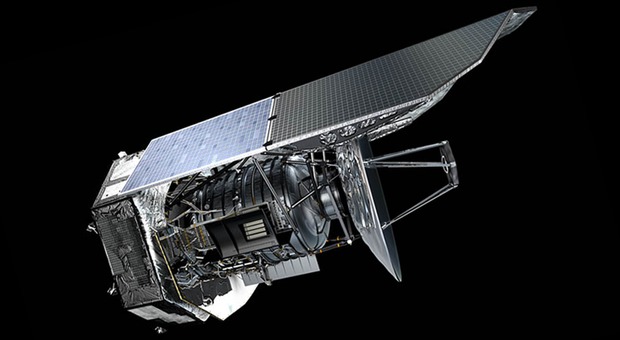
Herschel( Credit: NASA)

VLT (optical) (Credit: ESO)
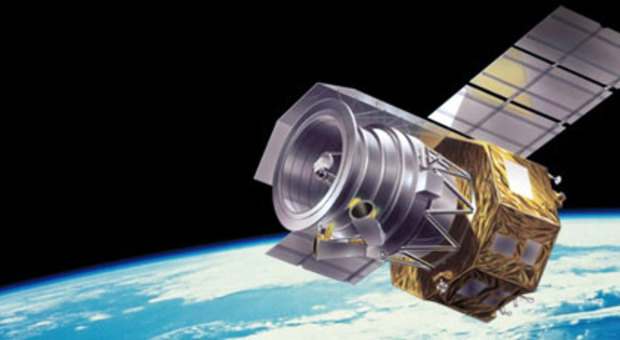
AKARI (MIR-FIR)
(Credit: JAXA)
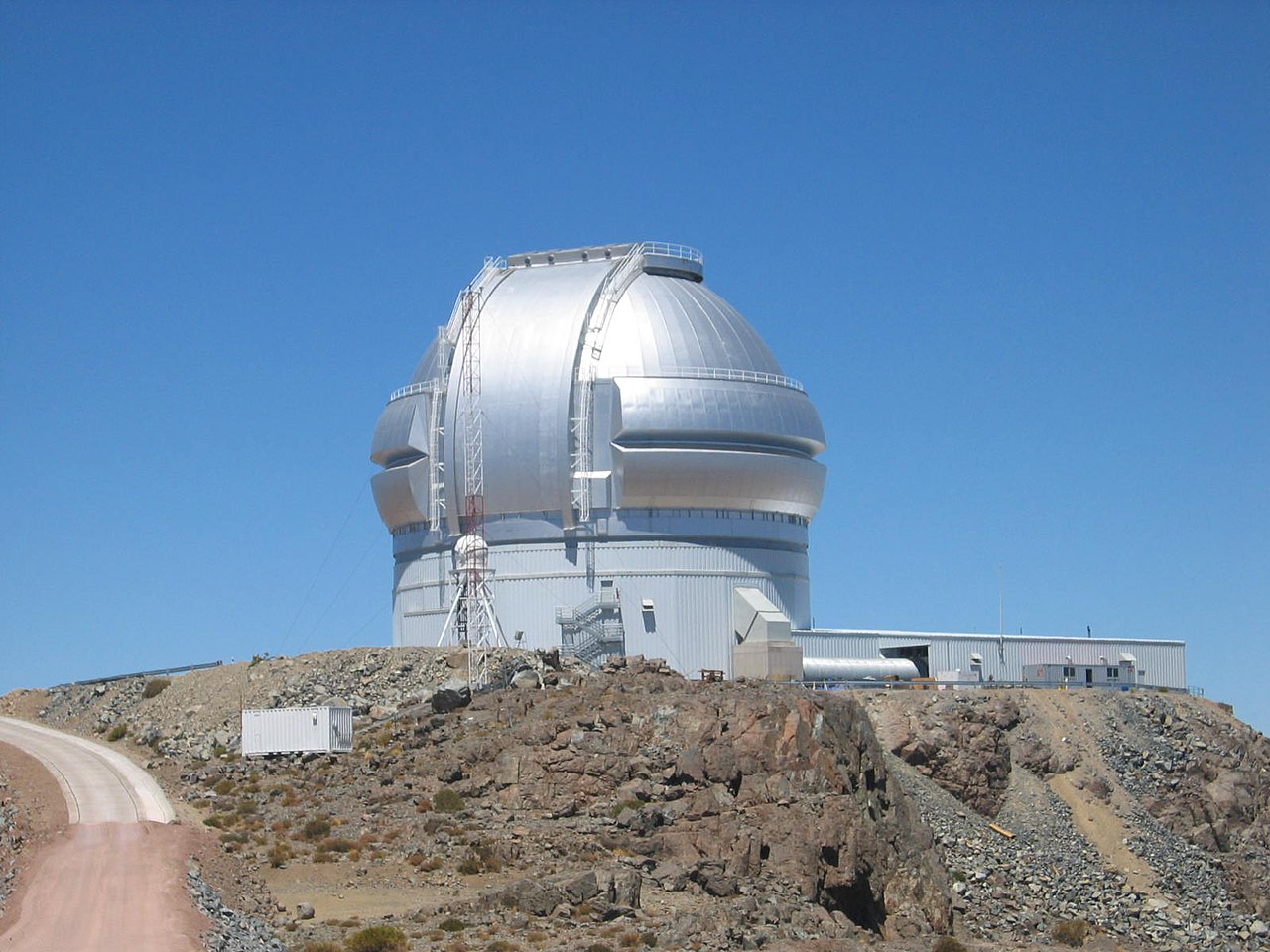
GEMINI (opt)
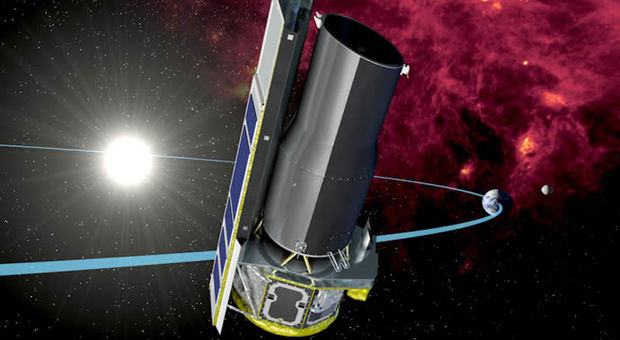
Spitzer (NIR-MIR)
(Credit: NASA)
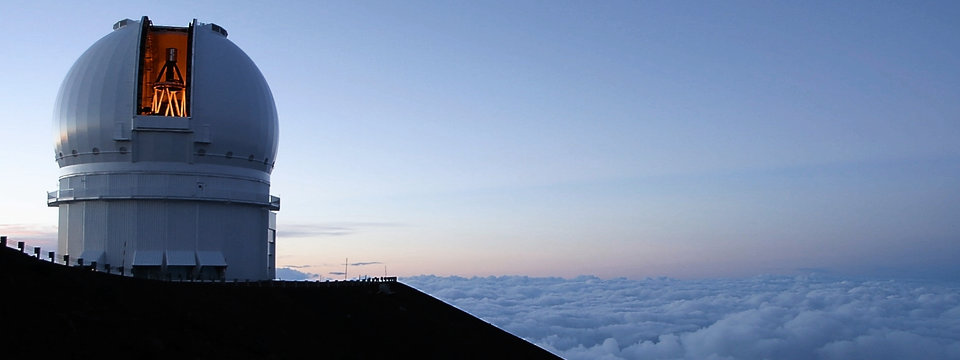
CFHT (Credit: cfht)
astrophysics full of colours!

GALEX (UV)
(Credit: NASA)

Herschel( Credit: NASA)

VLT (optical) (Credit: ESO)

AKARI (MIR-FIR)
(Credit: JAXA)

GEMINI (opt)

Spitzer (NIR-MIR)
(Credit: NASA)

CFHT (Credit: cfht)

Credit: ESO/WFI (Optical); MPIfR/ESO/APEX/A.Weiss et al. (Submillimetre); NASA/CXC/CfA/R.Kraft et al. (X-ray)
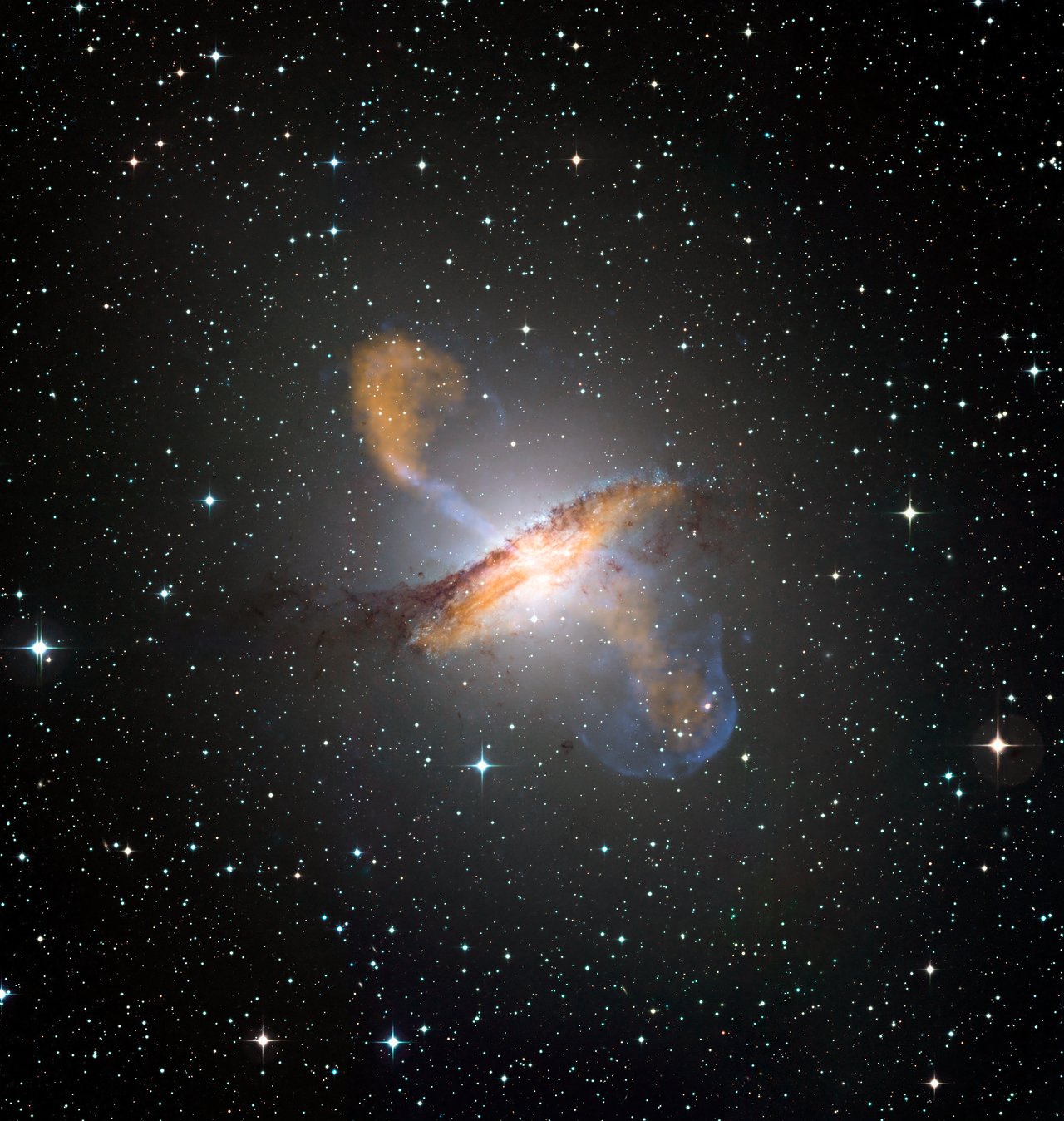
composite image of Centaurus A (z=0.0008)
870-micron submm LABOCA on APEX
X-ray: Chandra X-ray Observatory
visible: Wide Field Imager 9WFI) on the MPG/ESO 2.2 m telescope (dust lane and stars)


Credit: ESO/WFI (Optical); MPIfR/ESO/APEX/A.Weiss et al. (Submillimetre); NASA/CXC/CfA/R.Kraft et al. (X-ray)

composite image of Centaurus A (z=0.0008)
870-micron submm LABOCA on APEX
X-ray: Chandra X-ray Observatory
visible: Wide Field Imager 9WFI) on the MPG/ESO 2.2 m telescope (dust lane and stars)
KM+2018

Brown+2014 (NGC 3190)


KM+2018

Brown+2014 (NGC 3190)
Efstathiou, KM+2021


A hyperluminous obscured quasar at a redshift of z ~ 4.3
daCunha+2008

unattenuated stellar spectrum
attenuated stellar spectrum
UV-NIR
measurements
daCunha+2008

unattenuated stellar spectrum
attenuated stellar spectrum
measurements
UV-NIR
MIR
the emission by dust in the ambient ISM
the emission by dust in stellar birth clouds
daCunha+2008

unattenuated stellar spectrum
attenuated stellar spectrum
measurements
UV-NIR
MIR
the emission by dust in the ambient ISM
the emission by dust in stellar birth clouds
FIR
simple model without AGN component

Lagache+2005
the ratio between optical and IR energy changes as starburst activity increases
Spectral Energy Distribution


Spectral Energy Distribution

We can also add informaion about AGNs
Ciesla+2015

Gao, Wang, KM+ submitted
Guang+2020
Spectral Energy Distribution
We can also add informaion about AGNs



Ciesla+2015
+ ratio slope between 2500A (UV) & 2keV (X-ray)
Spectral Energy Distribution


But we are still missing something ...
something which can probe very cold areas in the galaxy - radio emisson
Spectral Energy Distribution



Credit: Mahmoud Hamed


What we can observe in radio wavelengths
?
SF galaxies & AGN
As both of those processes are closely related to the overall mass growth of galaxies we can use them to properly investigate the mass growth in the Universe.


SF galaxies: the synchrotron emission is powered by high-energy electrons and positrons, accelerated in supernova remnants when interacting with the diffuse magnetic field of the galaxy. The synchrotron emission in SF galaxies is closely related to recent star formation. In radio, we can also see cold areas in the birth clouds
origin of the radio emission:
AGNs: the synchrotron emission is powered by the central accreting black hole. However, the observed emission is believed to be emitted from regions which differ depending on the nature of the AGN (Smolic+2008)
from radio continuum
Synchrotron emission from AGN activity
obscuration free measure of star-formation
from spectral lines
Atomic gas (HI) - gas mass/fraction
from polarisation
magnetic fields in the cosmic web/LSS,
magnetic fields in galaxies/AGN
needed for SED modelling
!

Credit:N. Ramírez-Olivencia et el. [radio]; NASA, ESA, the Hubble Heritage Team (STScI/AURA)-ESA/Hubble Collaboration and A. Evans (University of Virginia, Charlottesville/NRAO/Stony Brook University), edited by R. Cumming [optical
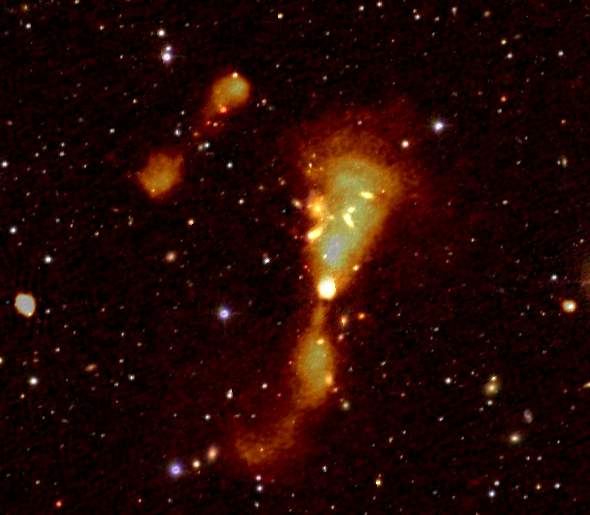
Credits: Cyril Tasse and the LOFAR surveys team
LOw Frequency ARray
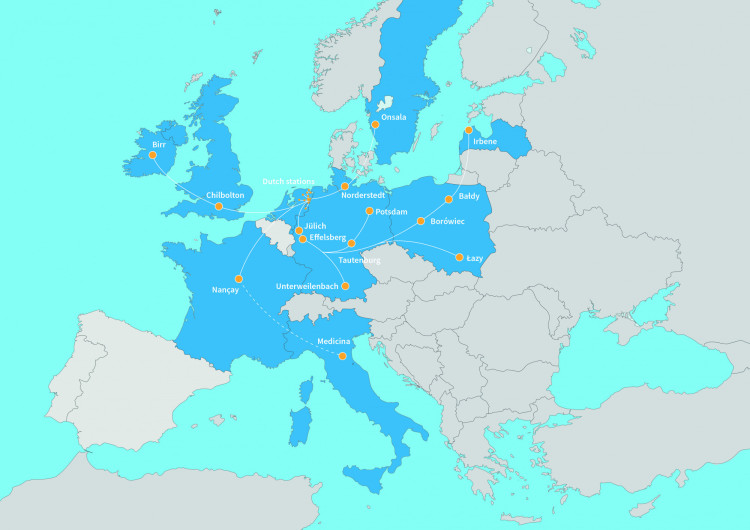
LOFAR is the world’s leading telescope of its type. It is operated by ASTRON, the Netherlands Institute for Radio Astronomy, and coordinated by a partnership of 9 European countries: France, Germany, Ireland, Italy, Latvia, the Netherlands, Poland, Sweden and the UK.
LOFAR

Exloo, Netherlands

High-band antenna
(110-240 MHz)

Low-band antenna
(10-90 MHz)

POLFARO: Polish station of LOFAR in Bałdy, Łazy and Borówiec.
In its ‘high-band’ configuration, LOFAR observes at frequencies of around 150 MHz.
LOFAR Science goals


Nearby galaxies
Cosmology and large-scale structure
Strong gravitational lenses
Galactic radio sources
Serendipitous discovery
High redshift radio galaxies
Galaxy clusters
Cosmic star formation history
Detailed studies of AGN physics and feedback
AGN evolution and black hole accretion history
LOFAR Deep Fields
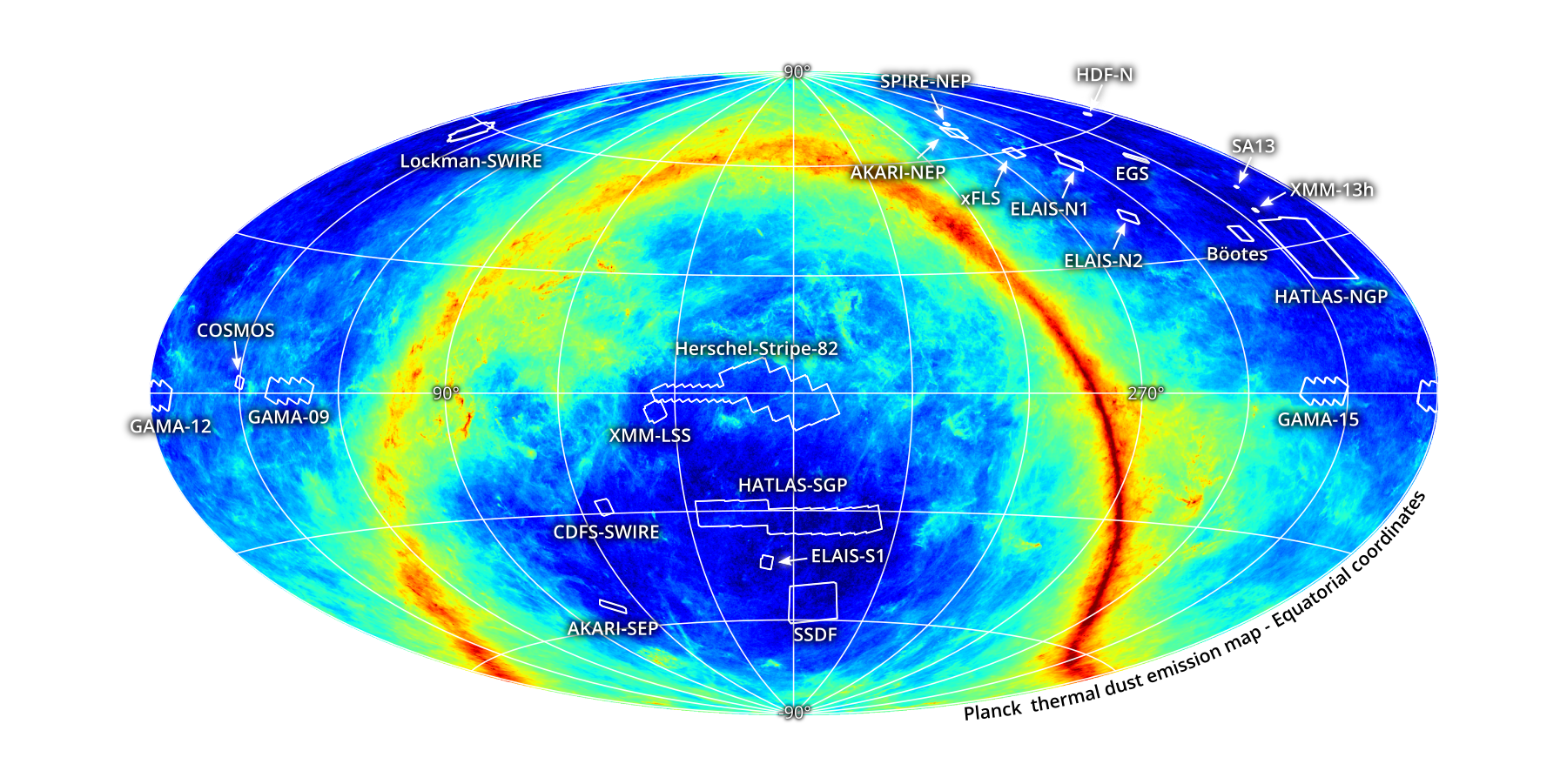


Kondapally+2021

Best,..KM+2021
LOFAR

80 - 164 hrs of LOFAR observations

Best in preparation
LOFAR


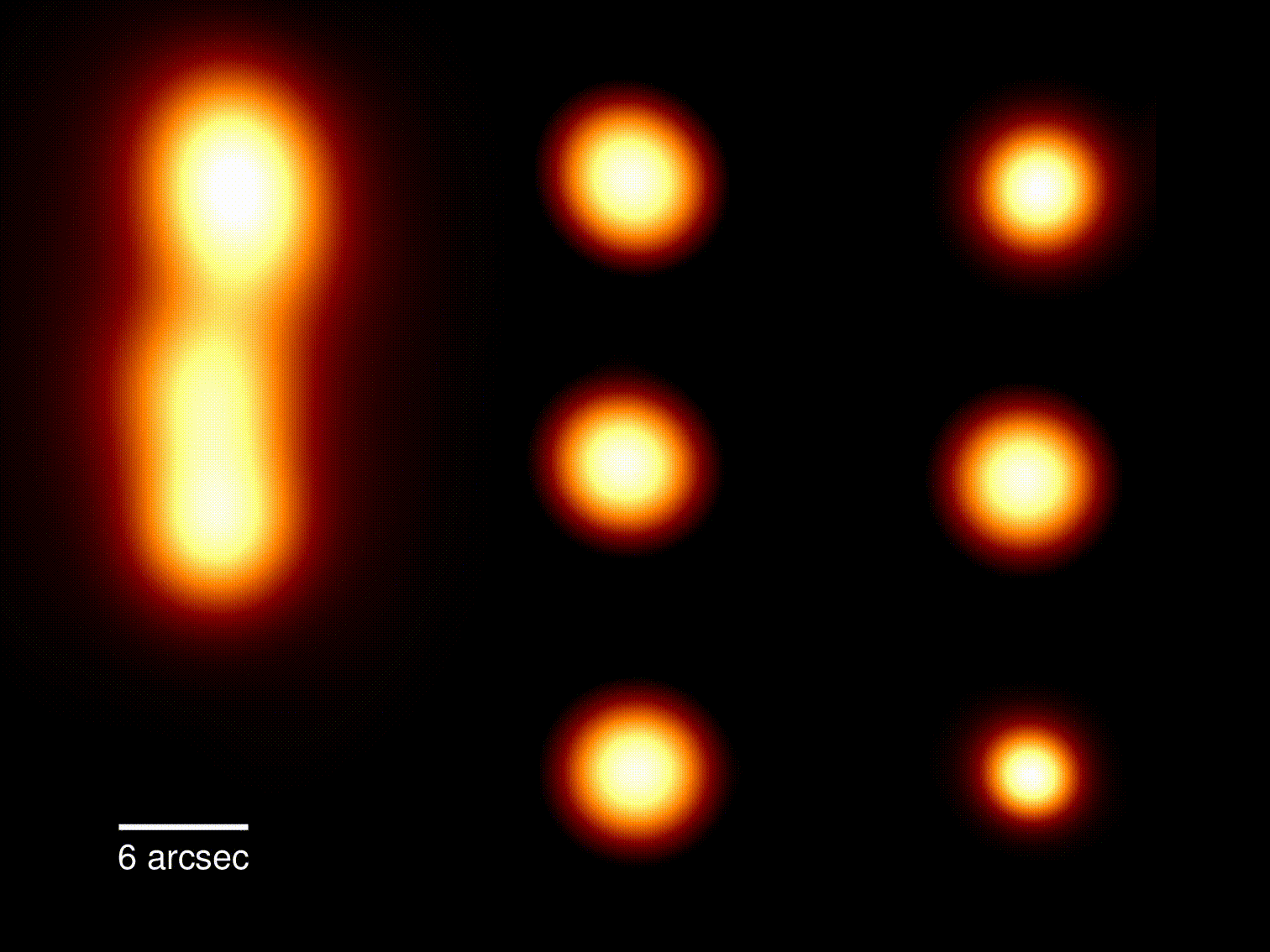
Real radio galaxies from Morabito et al. (2021). The gif fades from the standard resolution to the high resolution, showing the detail we can see by using the new techniques. Credit: L.K. Morabito; LOFAR Surveys KSP
LOFAR

LOFAR



z=4.3
LOFAR
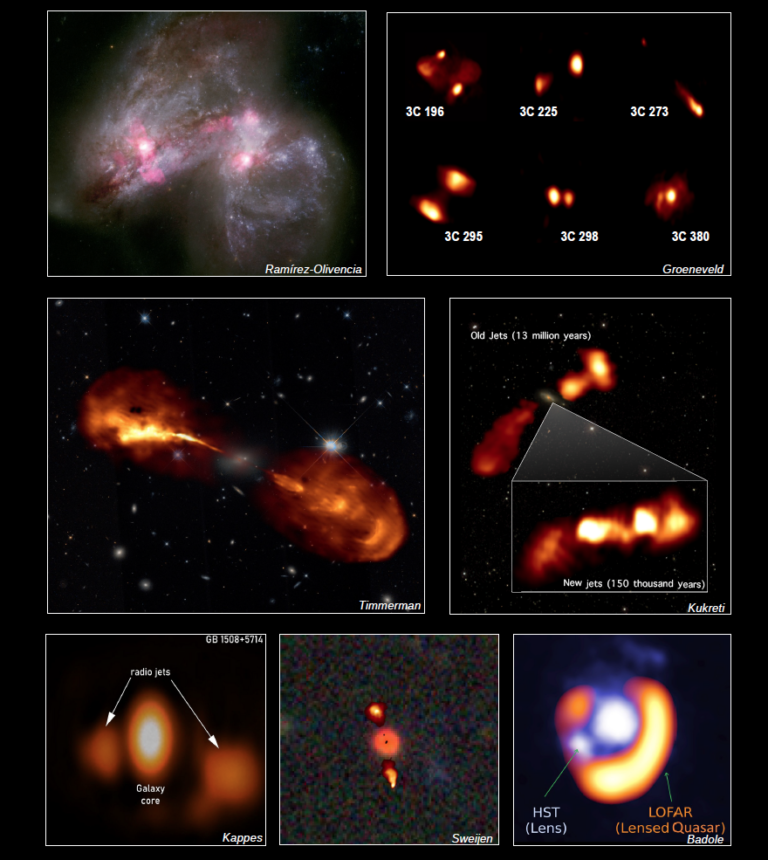
Sy 1 z=0.86
Sy 1 z=0.16
Sy 2 z=0.46
quasar z=1.43
Sy 1 z=0.69
radio z=0.58
z=2.43
quasar z = 4.30
APR 229 (interactive galaxies) z=0.0010
Hercules A Brightest galaxy in a Cluster, z=0.15
z = 3.2 quasar lensed by a galaxy at z= 0.35
LOFAR

Sy 1 z=0.86
Sy 1 z=0.16
Sy 2 z=0.46
quasar z=1.43
Sy 1 z=0.69
radio z=0.58
z=2.43
quasar z = 4.30
APR 229 (interactive galaxies) z=0.0010

LOFAR

Sy 1 z=0.86
Sy 1 z=0.16
Sy 2 z=0.46
quasar z=1.43
Sy 1 z=0.69
radio z=0.58
z=2.43
quasar z = 4.30
APR 229 (interactive galaxies) z=0.0010
Hercules A Brightest galaxy in a Cluster, z=0.15
z = 3.2 quasar lensed by a galaxy at z= 0.35
LOFAR

Sy 1 z=0.86
Sy 1 z=0.16
Sy 2 z=0.46
quasar z=1.43
Sy 1 z=0.69
radio z=0.58
z=2.43
quasar z = 4.30
APR 229 (interactive galaxies) z=0.0010
Hercules A Brightest galaxy in a Cluster, z=0.15

LOFAR

Sy 1 z=0.86
Sy 1 z=0.16
Sy 2 z=0.46
quasar z=1.43
Sy 1 z=0.69
radio z=0.58
z=2.43
quasar z = 4.30
APR 229 (interactive galaxies) z=0.0010
Hercules A Brightest galaxy in a Cluster, z=0.15
z = 3.2 quasar lensed by a galaxy at z= 0.35
LOFAR

Sy 1 z=0.86
Sy 1 z=0.16
Sy 2 z=0.46
quasar z=1.43
Sy 1 z=0.69
radio z=0.58
z=2.43
quasar z = 4.30
APR 229 (interactive galaxies) z=0.0010
Hercules A Brightest galaxy in a Cluster, z=0.15
z = 3.2 quasar lensed by a galaxy at z= 0.35

LOFAR

Sy 1 z=0.86
Sy 1 z=0.16
Sy 2 z=0.46
quasar z=1.43
Sy 1 z=0.69
radio z=0.58
z=2.43
quasar z = 4.30
APR 229 (interactive galaxies) z=0.0010
Hercules A Brightest galaxy in a Cluster, z=0.15
z = 3.2 quasar lensed by a galaxy at z= 0.35
Using radio data to uncover properties of star-forming galaxies in young Universe
Spectral Energy Distribution


Calistro-Rivera et al., 2017

modeling the SED of galaxies
Spectral Energy Distribution


Guang, KM et al., submitted

modeling the SED of galaxies
new CIGALE will be public soon
Hyper Luminous Infrared Galaxies
Hyper Luminous Infrared Galaxies
LOFAR data allows us to identify highly complete (~92%) samples of bright Herschel sources with a simple selection based on the 250 µm flux density (45, 40, and 35 mJy in Boötes, Lockman Hole, and ELAIS-N1, respectively).
Wang, Gao,... KM+ 2020
We found that the population of HLIRGs has surface densities of ~5 to ~18 /deg2

Hyper Luminous Infrared Galaxies

Contribution of LoTSS HLIRGs to cosmic star-formation density.
Gao, Wang, Efstathiou, KM+ in prep

The BH growth rate to SFR ratio as a function of stellar mass.The sizes indicate the AGN fractions.
Source classification


Source classifications
Magphys (da Cunha et al., 2008)
BAGPIPES (Carnall et al., 2019)
CIGALE (Boquien et al., 2019) x2
AGNfitter (Calistro-Rivera et al. , 2016)
Best et al., in prep
four classes: star-forming galaxies, radio-quiet AGN, and radio-loud high-excitation and low-excitation AGN.
~80, 000 radio sources from the
LoTSS Deep Fields
ELAIS N1, Boötes
Lockman Hole


Source classifications
(Best et al., in prep)

four classes: SF galaxies (SFG), radio-quiet AGN (RQQ), and radio-loud high-excitation (HERG) and low-excitation AGN (LERG).
Star-forming galaxies dominate the LoTSS Deep fields at all redshifts


Source classifications
(Best et al., in prep)
LoTSS Deep Fields summary:
~80,000 radio sources with IDs over 25 sq.deg
Consistent redshifts, stellar masses, SFR estimates and source classifications
Star formation rate estimation


Calistro-Rivera et al., 2017



Calistro-Rivera et al., 2017

total IR luminosity / radio luminosity
evolution??

relation between 150MHz and SFR for a NIR selected sample 18,517 z < 1 galaxies (ELAIS N1).
No evolution with redshift

Strong evolution with mass
Smith et al., 2020

Strong evolution with mass
In the absence of AGN, 150MHz observations can be used to measure accurate galaxy SFRs out to z = 1 at least, but it is necessary to account for stellar mass in the estimation in order to obtain 150MHz-derived SFRs accurate to better than 0.5dex.
Mulcahey, KM et al., submitted
SF and AGN Feedback at z<0.15
LOFAR + MaNGA integral field spectroscopy
radio detected AGN have broad SFR distributions, typically lie below the SF main sequence -> they occupy galaxies with suppressed SF
AGNs selected based on their current activity are not responsible for suppressing their host galaxies’ star formation.

we also have a lot of sources at high z ...

Best et al., in prep
SUMMARY
Radio continuum surveys offer unique information about AGN and unobscured SF activity
LOFAR surveys already published amazing data which can be use case by case or for the multiwavelength modelling of galaxies, and the potential of a complete survey is much bigger:
- a complete sample of HLIRGs shows a flattening trend of BH growth rate as stellar mass increases, implying that HLIRG may reach a maximum value of BH growth rate, similar to stellar mass,
- HLIRGs contributes more to the cosmic SFR density as redshift increases.
- up to now, we have found no evidence for redshift evolution in the SFR-radio relation (but strong mass dependence).